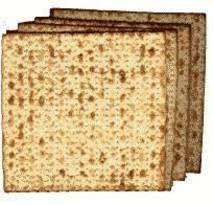A Passover Message,
Written by Rabba Kaya Stern-Kaufman
Dear friends,
This is the season of redemption. In springtime, the whole earth attests to the natural power of rebirth with the return of birdsong, the blossoming of new green life, a redemption from darkness into light, and from oppression to freedom.
The rabbis taught that in the month of Nisan we were redeemed and in the month of Nisan we shall be redeemed. (BT, RH 11a)
Our mystical tradition teaches that Divine compassion is revealed in this month, specifically at the time of Pesach. The name Yud Hei Vav Hei, that is, the name God gives to God’s Self, is traditionally understood as a moniker for Divine compassion. (Ex. 6:3) This is the power that sets the entire redemption of Passover into play. As you may recall, it is when God hears the cries and suffering of the Israelites that God is moved to remembers the promise made to Abraham. Thus begins the redemptive process through the selection of Moses as God’s human emissary.
The Meor Einayim teaches that the Divine energy of compassion is revealed at every Pesach and that this opening provides for the flow of Divine compassion throughout the entire year. This is what makes redemption possible.
How so? How might we understand this in down-to-earth terms?
When we hear terrible news, of a friend’s serious medical diagnosis, or a recent school shooting taking the lives of innocent children and their teachers, we may cry to express our grief. Sometimes the magnitude of the pain may give rise to a stronger urge to turn away, to close down, to shield ourselves from suffering. That is the moment when the flow of compassion is blocked. But when we allow ourselves to feel, as painful as it may be, we may be more likely moved to action. We may support a sick friend with home-cooked meals or words of encouragement. We may speak out to advocate for social or political change. Pain, accompanied by compassion, can become fuel for redemptive change, if we hold ourselves open to this process.
Our teacher the Meor Einayim stresses that at Passover, as we sit down together at the seder table, our task is to unveil the compassion that is hidden in everything.
How is it that hesed, compassion, is hidden in everything? One example can be taken from the realm of illness and healing. Healing itself is a miraculous process. The capacity of the body to renew and recover from injury is, on a spiritual level, an expression of Divine love. We can understand physical and emotional healing as a process fueled by the Divine force of compassion. This quality of compassion exists in us all.
Meor Einayim is teaching us several critical things to aid us as we walk through life.
1) A redemptive process begins with compassion, both Divine and human.
2) Divine compassion exists in everything, even in darkness, in suffering, and in pain.
3) We can draw forth the powers of compassion into the world through our actions.
4) Our Passover seder is an engine to get this process going.
5) We will be redeemed by the forces of compassion that we draw forth, on Passover and every day.

The challenge: to be like matzah / מצה and not like chametz / חמץ .
What is the difference?
Both words share the letters Mem– מ and Tzaddi– צ. The difference between them lies in the Heh- ה of matzah / מצה and in the chet– ח of chametz / חמץ . We can say that these letters illustrate the difference between being on a path toward liberation or being closed off and stuck.
The chet in chametz is closed on three sides- ח. When it sits on a line, there is no opening in its form. One could say that this letter represents being closed off to others’ needs, focused only on oneself. In life, this kind of closed expression is a dead-end that maintains oppression. The letter Heh in matzah, while a similar shape, has an opening- ה . This “window” allows the letter to breathe. The sound of the Heh itself is also a breath, letting something in and letting something out. The letter Heh reminds us that being open is the path we should choose. Being open, behaving compassionately toward others, is the foundation work for freedom and redemption. On Passover we banish chametz and nourish ourselves with matzah.
In springtime, everything is bursting open. From a spiritual perspective, this opening can be understood as the physical manifestation of Divine compassion at work through matter. The breath of renewal pulses through the entire world, a Divine breath of healing. Our seder ritual shows the way to align ourselves with the natural flow of compassionate energy filling the world at this time.
In the month of Nisan we were redeemed and in the month of Nisan we shall be redeemed.
May it be so.
With blessings for a meaningful and sweet Passover,
Rabba Kaya and Steve